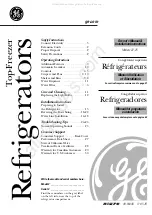
en
Cool-fresh compartment
12
T
Cool-fresh
compartment
Cool-fres
h compart
ment
The temperature in the cool-fresh
compartment is kept at around 0 °C.
The low temperature and the optimum
moisture provide ideal storage
conditions for fresh food.
With cool-fresh storage, you can keep
fresh foodstuffs fresh for up to three
times longer than in the refrigerator
compartment – for even longer
freshness, nutrient retention and better
flavour.
Vegetable container
~
Fig.
*
The vegetable container is the best
storage location for fresh fruit and
vegetables. You can adjust the humidity
in the vegetable container via the
humidity controller of the division plate
and a special seal.
The air humidity in the vegetable
container can be set according to
the type and amount of products to be
stored:
■
Mainly fruit as well as for a large
load – set lower air humidity
■
Mainly vegetables as well as for
a mixed or small load – set higher
air humidity
Notes
■
Fruit sensitive to cold (e.g.
pineapple, banana, papaya and
citrus fruit) and vegetables sensitive
to cold (e.g. aubergines, cucumbers,
courgettes, peppers, tomatoes and
potatoes) should be stored outside
the refrigerator at temperatures of
approx. +8 °C ... +12 °C for
optimum preservation of quality and
flavour.
■
Condensation may form in the
vegetable container depending on
the food and quantity stored.
Remove condensation with a dry
cloth and adjust the humidity in the
vegetable container with the humidity
controller.
Cool-fresh container
~
Fig.
!
/
)"
The storage climate in the cool-fresh
container offers ideal conditions for the
storage of fish, meat and sausage.
Storage times at 0 °C
The storage times are dependent on the
original quality.
Fresh fish, seafood:
up to 3 days
Poultry, meat (boiled/fried):
up to 5 days
Beef, pork, lamb, sausage
products (cold meat):
up to 7 days
Smoked fish, broccoli:
up to 14 days
Salad greens, fennel,
apricots, plums:
up to 21 days
Soft cheese, yoghurt, quark,
buttermilk, cauliflower:
up to 30 days
Summary of Contents for KI841 Series
Page 1: ...en User manual Refrigerator KI841 KI851...
Page 18: ...6...
Page 19: ...2 h X P H C h e e s e C C Alarm Super 6XSHU ODUP...
Page 20: ......
Page 21: ...1 3 2...
Page 22: ......
Page 23: ...8001020588 8001020588 9607 en...









































